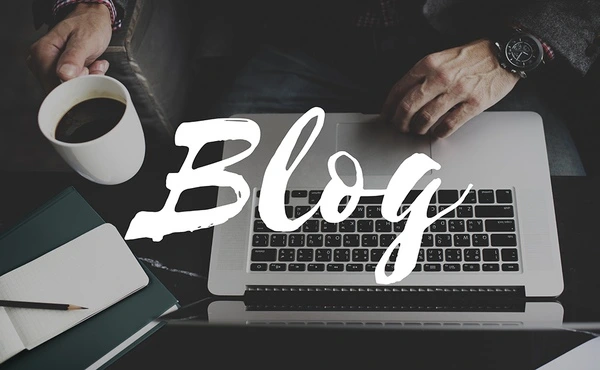
Email marketing plays an important role in the banking industry since it allows for direct, customized consumer engagement. Banks can boost client engagement, create trust, and drive conversions by sending clear, secure, and personalized emails. This book will cover everything from best practices in email design to new trends, as well as present examples of how banks may improve their email communication strategy.
What is Email Design?
Email design is the planned organization of numerous components within an email to make it visually beautiful, understandable, and actionable. Layout, graphics, typography, content organization, and calls to action (CTAs) are all important aspects of email design.
The layout relates to the overall organization and structure of the email, while graphics like images and logos increase engagement. Design refers to the style and size of text to promote readability, while content structure defines how information is presented through headers, body text, and bullet points. CTAs, like buttons or links, direct visitors to take certain actions, such as "View Account" or "Learn More."
There are two types of emails: plain-text emails, which are simple communications without complicated formatting, and HTML-designed emails, which have a structured style and visuals to provide a more dynamic experience. A well-designed email improves the user experience, clearly communicates the message, and encourages customer action.
Importance of Best Bank Email Designs
For banks, the design of email communications is critical for several reasons:
Trust & Security:
Banks can use email design features like brand colors, logos, and SSL-certified links to assure clients that their data is secure.
Professionalism:
A clean, professional design shows the bank's reputation for reliability, which is important in the financial industry.
Clarity:
Financial emails must provide information in a clear and intelligible manner, particularly for important updates and transaction confirmations.
Branding Consistency:
Consistent use of logos, colors, types, and tone improves brand identity and awareness, giving customers confidence in communication.
Best Practices for Bank Email Design
Mobile Responsiveness: Because many customers access emails on their phones, email designs must be responsive, which means they look beautiful and are easy to use on mobile devices.
Clear and Visible CTAs:
Use prominent, basic CTAs that direct users to actions such as "Check Account Balance" or "View Statement."
Personalization:
Emails should be personalized using consumer data, such as their name, as well as targeted information, such as relevant financial items, through segmentation.
Security Signals:
Customers can be aware that the email is real by incorporating security icons, sender verification, and SSL-certified links.
Scannable Layouts:
Organize writing with headings, bullet points, and short paragraphs to make it easier to read and find important information.
Accessibility:
Make emails accessible to all customers, especially those with vision problems. Use ALT text for photos, understandable fonts, and a strong contrast between text and background.
Compliance with Regulations:
Emails must follow standards such as GDPR, CAN-SPAM, and banking-specific laws to ensure legal and ethical communication.
Trends in Bank Email Designs for 2025
Interactive Emails:
Include integrated buttons and interactive elements that allow consumers to do actions, such as checking balances or tracking expenses, immediately from the email. This adds simple and boosts user engagement.
Minimalistic Design:
Prefer a basic, clean style that communicates crucial information without confusion. This strategy improves readability, allows users to focus on important topics, and improves overall user experience.
Dark Mode Optimization:
Ensure your emails are optimized for dark mode, as this feature is becoming increasingly popular across email services. This adaptation enhances readability and user comfort for those who prefer darker interfaces.
Video and GIF Integration:
Use short videos or GIFs to announce new services or give instructions. These dynamic components can attract consumers' attention, improve knowledge, and engage them more effectively than static content.
AI-Driven Personalization:
Use AI to provide personalized financial advice, spending insights, and customized product recommendations based on consumer information. This technique improves the user experience and builds stronger customer connections.
Sustainability Messaging:
Promote sustainable banking practices by campaigns for electronic alternatives and paperless transactions. This not only decreases the environmental impact, but also improves efficiency and convenience for your customers.
Examples of Excellent Bank Email Designs
Example 1: Transaction Confirmation Email
Focuses on clarity and security, using simple layouts with bold headings, transaction details, and security icons to build trust.
Example 2: Promotional Email for New Financial Products
Highlights engaging design with personalized offers, striking visuals, and a clear CTA to encourage customers to explore new products.
Example 3: Financial Advice Newsletter
Structured to be informative yet concise, using scannable content blocks with headings, brief descriptions, and links to full articles.
Example 4: Customer Service Follow-up
Features a personalized greeting and a simple CTA for customers to provide feedback or access support, reinforcing customer care.
Tips for Creating Bank Email Designs
Maintain Consistency with Branding:
To ensure brand consistency, by using the same fonts, color schemes, and logos across all emails. This reinforces brand identity, builds trust, and ensures a cohesive experience for your audience.
A/B Testing:
Experiment with various design components like subject lines, button positions, and images to identify the most effective combinations. A/B testing these elements can help optimize engagement and conversion.
Use of White Space:
To enhance readability and organization, incorporate plenty of white space in your email design. This helps separate content sections, making it easier for recipients to scan and digest information quickly.
Incorporate Feedback Loops:
Include surveys or feedback tools in your emails to gather customer insights on communication effectiveness. This helps identify areas for improvement and shows customers that their opinions matter.
Focus on Security:
Enforce trust by prominently displaying safety features such as encryption notifications and trusted sender verifications. This reassures customers that their data is secure and enhances their confidence in your emails.
Quick Load Times:
Optimize images and content to ensure faster load times, particularly for mobile visitors on slower connections. This enhances user experience, reduces frustration, and encourages engagement with your emails.
Conclusion
Well-designed emails are critical for building consumer trust, engagement, and conversion rates. Banks may create emails that resonate with their target audience by following best practices and incorporating new trends like interactive components, AI-driven customization, and digital marketing software. It's time for banks to review their email strategy, incorporate new design elements, and increase consumer communication. If you want Write Better Emails Effortlessly, Check out our blog Discover the Best AI for Email Writing: Your Ultimate Tool for Perfect Emails
What to read next

